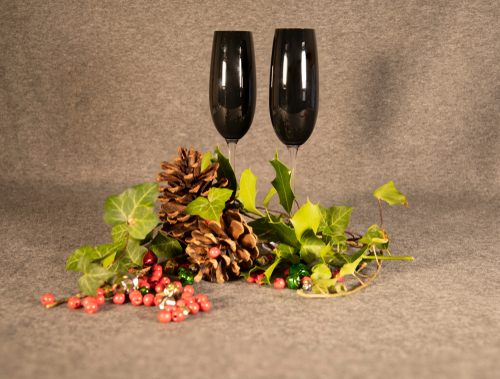The holly and the ivy,
When they are both full grown
Of all the trees that are in the wood
The holly bears the crown
O the rising of the sun
And the running of the deer
The playing of the merry organ
Sweet singing of the choir
The Holly and the Ivy is one of my favourite Christmas Carols and the lyrics and music were first published by Cecil Sharp (1859 – 1924). The carol itself however is much older. Sharp was the founding father of the folklore revival in England in the early 20th century, and many of England’s traditional dances and music owe their continuing existence to his work in recording and publishing them.
No one knows the ancient roots of The Holly and The Ivy, although King Henry VIII composed a similar love song back in the 15th century.
In olden days Holly was brought into the house variously to protect the home from malevolent faeries or to allow faeries to shelter in the home without friction between them and the human occupants.
Whichever of prickly-leaved or smooth-leaved holly was brought into the house first dictated whether the husband or wife respectively were to rule the household for the coming year. (Good job we have both in the garden!)
Bacchus, the Roman God of wine, traditionally wears the leaves of the Grape Vine as a garland on his head but this is only his summer attire. In winter he wears the Ivy. Ivy was thought to bring good luck and joy and was seen as a symbol of eternal life.
I don’t know what Bacchus’s favourite wine was but I am guessing it was red. Claret is perfect for Christmas as they are wines made with food in mind. I would recommend Château Pessan 2006 (£14.98) – a sumptuous and sensuous red which ages very well indeed. It is a velvety wine, deep and dense, perfectly balanced with hints of black fruits, spice, coffee, smoke, eucalyptus, pepper and oak.
Ironically perhaps, despite being the symbol of Bacchus, ivy did manage to find its way into church buildings whereas holly didn’t. Look carefully at decorative leaf patterns in churches – you are more likely to find ivy than any of the other evergreen varieties. Westminster Abbey is home to a fine example, as is Southwell Minster in Nottinghamshire where visitors can see a stone goat tucking in to an ivy leaf lunch.
Holly was brought by the Romans to Britain and it was a popular Saturnalia gift. In Medieval times Holly was often used to decorate the Wassail Cup.
It was said to have originated with the 5th century legend of the beautiful Saxon Rowena, who toasted the health of the Brythonic King Vortigern with the words Wæs hael (your health!). In early times the Wassail would have been made with mead and spices but in Medieval times it resembled mulled wine.
Some say that the sharp leaves of the Holly symbolize the crown of thorns and the red berries symbolize the blood of Christ. One legend says that the berries the holly bore were once white but turned red in remembrance of Christ’s blood.
Like the Holly in the legend, Bordeaux was once more famous for its white wines than for its reds. If you are looking for a white with a touch of class this Christmas then try M de Malle 2005 (£12.24) – it’s a beautiful wine: bold, brilliant green tinted gold with hints of white blossoms, exotic fruits, spice and good lemon acidity.

